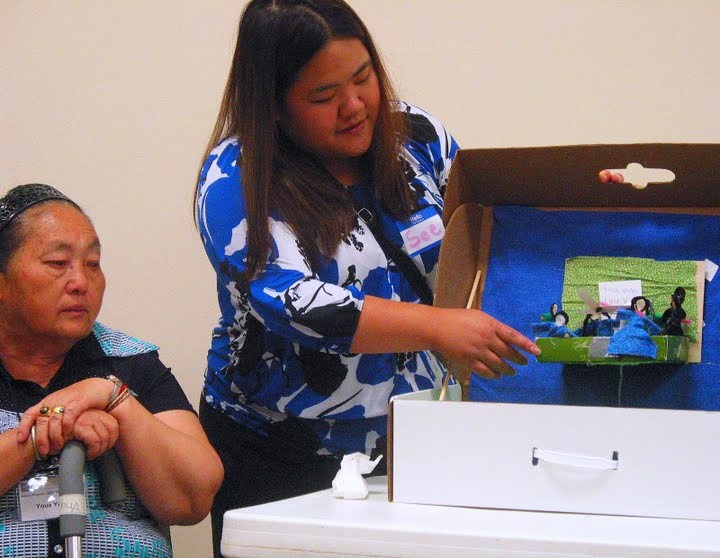WHAT: âÄúTalking Suitcases âÄî Gathering Life Stories in a Diverse WorldâÄù WHERE: Katherine E. Nash Gallery, in the Regis Center for Art, East Building, West Bank WHEN: Now âÄì December 17 TICKETS: Free The suitcases in her exhibit are not fancy, an aspect that curator Susan Armington said she designed on purpose. As she explains, by using only common materials such as pipe cleaners, beads and a hot glue gun, âÄúno one can succeed in making an exquisite or an elegant piece [of art].âÄù But that wasnâÄôt the point. ArmingtonâÄôs suitcases, on display now at the Nash Galler y, were created by people who had little or no artistic experience. Despite this, their works are a patchwork of extremely powerful stories of love and loss and the struggles of life in a place far from home. Armington first came upon the idea of using suitcases as a way to express oneâÄôs self through a personal experience she had with her father as he was terminally ill. At the time, she was an art student at the University of Minnesota and came up with the idea of filling a suitcase full of objects that reminded her of her father. She would take the objects out one by one and explain their significance. âÄúDoing this built my relationship with my father âĦ that wasnâÄôt possible any other way,âÄù she said. After that experience, Armington decided to share the work with others with the hope of facilitating the kind of transformation she had experienced. Different communities, such as the Hmong American Partnership, United Theological Seminary and Stevens Elementary in Dawson, Minn. , were asked to participate in a series of workshops directed by Armington. In the first day of the workshops, Armington asked everyone to construct an object that showed something about themselves. Once participants made that first object, or the âÄúseed objectâÄù as Armington calls it, and tell the story behind it, the rest fell together. âÄúAfter that point, they all knew how to do it,âÄù she explains. From there, the group regularly met and worked toward their final projects, a suitcase that could tell the story of their life. The gallery is lined with dozens of white cardboard suitcases sitting open, as if for inspection at the airport. Large televisions loop the videos of the different artists explaining their suitcases. Watching these videos is a must for anyone looking to get the full experience of the dialogue that âÄúTalking SuitcasesâÄù has to offer. Youa Yang is a Hmong-American who came to St. Paul years ago and now lives with her daughter. In her video, as she points out the airplane that brought her to America, she begins to cry. Through a translator, she explains how she has no one to support her and how disconnected she feels from the family she left behind. She explains that her life has had âÄúso many tragediesâÄù as she reaches for her glasses with unsteady hands. âÄúWhat really makes these suitcases talk is the community interactions that come from them,âÄù Armington pointed out. While the stories of immigrants struggling to survive was one of the most vivid parts of the exhibit, âÄúTalking SuitcasesâÄù tells many different kinds of stories. Kyler Collins, a student at Stevens Elementary, created a suitcase about his grandpa boxing in the Golden Gloves . When his grandpaâÄôs opponent tried to run away, âÄúMy grandpaâÄôs brother threw him back in the ring!âÄù reads the description above the bodies of two pipe cleaner boxers. A large street map is also on display at the gallery. It was created by the residents of Cedar Riverside, and is filled with objects in their community that they believe need repair. Armington laments the lack of this kind of accessible art-form in American culture but is hopeful that its day will finally come. âÄúThe world is waiting for this vernacular art,âÄù she said with a smile.

PHOTO COURTESY SUSAN ARMINGTON
Suitcases give voice to vernacular art
“Talking Suitcases” at the Nash uses personal objects to tell the stories of displaced communities.
Published November 24, 2009
0
More to Discover







